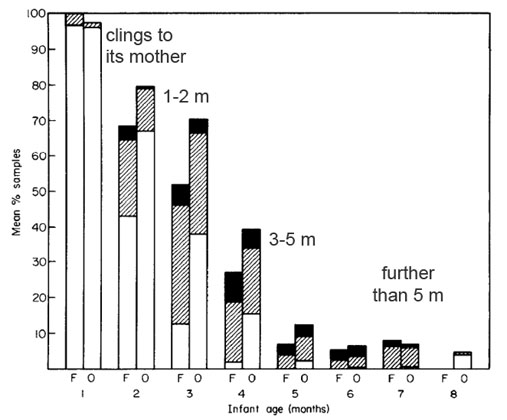
This graph (after Boinski & Fragaszy, 1989) of the development of squirrel monkeys shows how the contact between mother and child decreases in the course of the first eight months of the baby’s life. During the first month, the baby is for the most part clinging to the mother. During the next months, the baby will gradually begin to explore its environment by itself. At around five months, it will move five meters or more away from the mother, and spends less and less time together with her. It is now capable of finding food on its own.
We think Ida has developed in a similar way. The shape of her teeth indicates that she was an herbivore, and this is confirmed by the finding of fossil plant remains in her stomach. Her wrist had had time to partially heal since it fractured, so she was probably capable of finding food for herself. But she can't have been able to climb very well, and therefore must have spent much of her time on the ground.
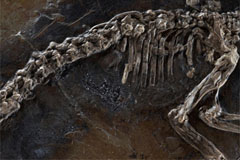 Fossil plant remains in Ida’s stomach tell us what she ate. |
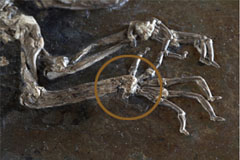 Her wrist was broken and not quite healed when she died. The fracture was healing crookedly and would have made her lame for life. |
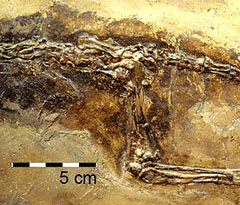 Stomach content found in plate B, Ida’s "opposite" plate. |
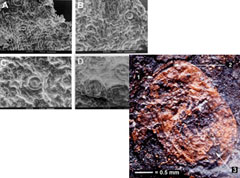 Right: Microscope picture of plant cells. Left: Electron microscope picture of leaves and picture of fruit preserved in Ida’s stomach. The similarity of the pictures tells us that Ida’s stomach contained plant remains. |